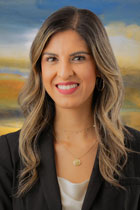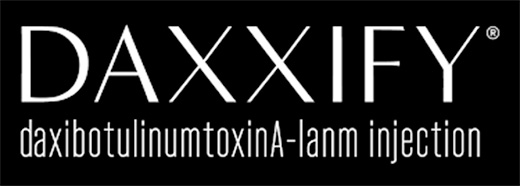
THE STATE BAR OF CALIFORNIA BOARD OF LEGAL SPECIALIZATION
| HAS BEEN NAMED A PARTNER OF THE FIRM |
![]()
 JENNIFER CORONA |
 SAMANTHA K. SHEEHAN |
 SHABNAM SAADATKHAH |
| JOINED THE MINYARD MORRIS TEAM AS ASSOCIATES |
![]()
Mark E. Minyard
- Recipient of the Franklin G. West Award presented at OCBA Judges’ Night
- Selected by Daily Journal as a Top 20 Family Law Attorney in California
- Authored four-part article, “Family Law Courts – A Call for Effective Change” for The Daily Journal
- Authored article for OC Lawyer Magazine, “Ten Years After the Elkins Task Force, Judicial Openings Remain”
- Co-authored article for OC Lawyer Magazine “Toxic Stress on Children in High Conflict Divorces, Judicial Vacancies Remain”
- Lectured at Chapman Law School on Complex Issues in Family Law
- Presented at OCBA for Small Firm/Solo Practitioner Section “OCBA: The Master Experience”
Michael A. Morris
- Presented at Association of Certified Family Law Specialists’ Annual Spring 2023 Seminar
Matthew S. Buttacavoli
- Presented at OCBA Family Law Section: “Tools for Dealing With The Non-Disclosing Business Owner: Beyond Motions to Compel”
- Elected President of the Constitutional Rights Foundation-Orange County’s Board of Directors
- Presented at Association of Certified Family Law Specialists, “Navigating Settlement Conferences: Harnessing the Tools to Settle Your Client’s Case” with Judge Stock
Alexander C. Payne
- Admitted as Fellow of the American Academy of Matrimonial Lawyers
- Elected to Public Law Center’s Board of Directors
Janani S. Rana
- Elected to the Orange County Women Lawyers Association 2024 Board of Directors
- Installed as South Asian Bar Association of Southern California-Orange County Judicial Endorsement Committee Co-Chair
- Installed as USC Gould Orange County Committee Co-Chair for 2nd Term
- Co-authored article, “What Every Business Owner Should Know About Divorce in Orange County,” with CPA Robert Watts for OC Lawyer Magazine
- Hosted USC Gould OC Chapter Dinner at Minyard Morris
Jonathan T. Little
- Presented at OCBA Family Law Section: “Tools For Dealing With The Non-Disclosing Business Owner: Beyond Motions to Compel”
- Presented at OCBA YLD: “Demystifying Depositions: The Laws, Tips, & Strategies You Need to Know”
Scott M. Savage
- Presented at OCBA Family Law Section “Tips and Strategies to Oppose and Move-Away Request” with Judge Miller & Attorney Campuzano
- Presented at OCBA Family Law Series Part 1: “Custody, Child Support & DVPA”
Aditi Murillo
- Elected to OCBA YLD Board as Diversity & Inclusion Chair
- Elected to serve on Project Youth OC Associate Board
- Attended the National Family Law Trial Institute – Advanced Cross Examination
- Volunteered as Presenter for Constitutional Rights Foundation Orange County’s 8th Grade Constitution Day Program
John Murillo
- Elected to OCBA YLD Board as Education Chair
- Elected to serve on Project Youth OC Associate Board
- Attended the National Family Law Trial Institute – Advanced Cross Examination
- Volunteered as Presenter for Constitutional Rights Foundation Orange County’s 8th Grade Constitution Day Program
- Co-Chaired associate attorney’s Jonathan T. Little’s OCBA YLD Presentation: “Demystifying Depositions: The Laws, Tips, & Strategies You Need to Know
- Co-Chaired OCBA YLD Presentation: “Impaired Colleague? Addressing Attorney Competency, the Warning Signs, and Getting Help.”
Leyla S. Tabatabaie
- Elected to Second Term of Iranian American Bar Association’s Orange County Board
- Attended the National Family Law Trial Institute – Advanced Cross Examination
Samantha K. Sheehan
- Attended the National Family Law Trial Institute – Kolodny Trial Skills
Denise H. Koeller
- Elected to the Orange County Asian American Bar Association Board of Directors
Super Lawyers
- Top 50 Lawyers – Orange County
- Mark E. Minyard and Michael A. Morris
- Top 100 Lawyers – Southern California
- Mark E. Minyard
- Super Lawyers for 2023
- Mark E. Minyard, Michael A. Morris, Lonnie K. Seide, Matthew S. Buttacavoli
- Rising Stars for 2023
- Alexander C. Payne, Janani S. Rana, Leyla S. Tabatabaie, Samantha K. Sheehan
Best Lawyers
- Minyard Morris selected as a Tier 1 Best Law Firm for 2024
- Best Lawyers for 2024
- Mark E. Minyard, Michael A. Morris, Lonnie K. Seide
- Ones to Watch for 2024
- Alexander C. Payne, Janani S. Rana, Scott M. Savage, Leyla S. Tabatabaie, Denise H. Koeller, Vicky Zuberi
Lawdragon
- Leading Family Lawyers for 2024
- Mark E. Minyard and Michael A. Morris
Minyard Morris contributed to the following non-profit organizations in 2023:
- OCHBA Installation
- OCBF Project Youth – OC Marathon
- OCBA Masters Division Celebratory Lunch
- OCBA Charitable Fund – Golf Tournament
- SABA-SC Annual Banquet
- PLC Volunteers for Justice
- OCBF Brewfest
- OCBA Masters Division Angels Games
- OCAABA Installation Dinner
- USC Gould Summer Mixer
- OCBA Charitable Fund
- OCBA Masters Division Legends of the Law
- ADL Jurisprudence Dinner
- IABA Annual ABC Night
- OCKABA 18th Installation Dinner
- CRF-OC Annual Benefit
- Legal Aid SoCal Justice Served
- OCWLA Annual Gala
- PLC Halloween Bash
- VABASC Installation
- VLI Lawyer for Warriors
- USC Gould Annual Holiday Mixer
- MSB’s USD OC Law Alumni Holiday Party
- OCBA Masters Division Winter Celebration
- OCBF Project Youth
- Public Law Center
- Hispanic Bar Association
- AAML










